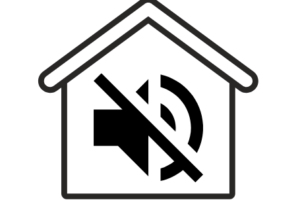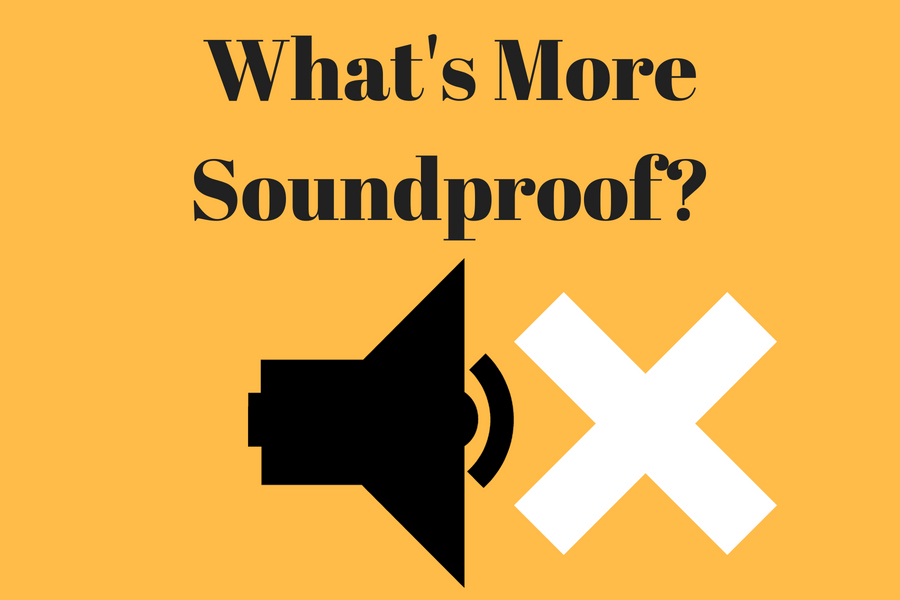Soundproofing a wall is a major endeavor, and not one to be taken lightly. There are just SO many materials that could be used, and for a person with little knowledge about soundproofing, it’s really important to compare the main options, i.e : Which one out of drywall, plywood, MDF(Medium Density Fiberboard) or OSB (Oriented Strand Board) is more soundproof?
The short answer is that drywall will make your wall more soundproof than the other materials. This is because it has more mass, which is one the key factors for any sound proofing material. OSB And MDF give comparable results but have their own drawbacks. Plywood should be at the bottom of your list of options because sound travels really fast through wood.
That was just the short answer though- here are some more things you’ll need to know about these materials:
Drywall
Made mainly of gypsum(calcium sulfate dihydrate), it is one of the best materials for soundproof walls.
Most commonly, two layers of drywall are used to provide that extra mass that can block sound.
The other advantage is that it’s easier to install than some of the other materials which brings down installation costs.
⅝” thickness drywall sheets perform better than ½” and are more commonly used as well.
Plywood
Generally doesn’t seem to be as popular a choice because sound travels faster through wood than drywall and it doesn’t have as much mass.
MDF(Medium Density Fiberboard)
While MDF has a similar mass as drywall and will give roundabout the same type of soundproofing results, it has a couple of serious drawbacks:
- It costs more- a single ¾“ thick, 4ft x 8ft sheet of MDF costs about $30. The price for ½” thick 4ft x 8ft of sheetrock(a drywall brand)? $23. For ⅝” that cost goes up to about $27.
- It absorbs water very quickly. Even if it is being used as an inner layer between two layers of drywall, a lot of people online seem to have had some bad experiences
- It’s a fire hazard
- A lot of people in forums online have also stated that it’s tougher to cut and use than drywall. This is probably because it’s slightly heavier and has more mass.
- Not good for health- MDF boards are glued together using resins that emit VOC’s or Volatile Organic Compounds that are the biggest source of indoor air pollution, according to the EPA
If you still decide to use MDF, you should at least keep it in mind to put a coat of paint on it soon as you can. The one thing that cannot be said enough about it is that it absorbs moisture FAST!
OSB(Oriented strand board)
OSB is similar to MDF or particle board in that it is formed by pressing different wood strands together using adhesives.
While these adhesives, like MDF also probably emit VOCs, the good thing about OSB is that it doesn’t absorb water as quickly as MDF- in fact, it does so quite slowly.
However, it also dries out very slowly, so if there are any seepages in the plumbing that go undetected for some time, it might be an issue.
As for soundproofing- it very similar mass to drywall and hence, will give similar results.
It may turn out to be a tad more expensive though- by about $100-200
Some Things To Keep In Mind While Soundproofing Your Wall
You’ll Need Additional Layers of Drywall
Like I said earlier, drywall is probably the best material out there for building a soundproof wall- specifications and cost wise both.
However, having just a single sheet of drywall isn’t going to do anything.
What you’re probably going to need are at least two layers. There are a few design principles that you can explore as well such as staggering the studs which will truly enhance just how well the wall blocks out noise- but that’s a topic for another day.
Add A Mass Loaded Vinyl(MLV) Sheet
Another really great option is adding a layer of MLV between two layers of drywall. It’s basically a really thick material that will dampen sound vibrations drastically.
Keep in mind that MLV is a bit on the expensive side, so make sure to do the math on how it’ll affect your overall costs. If it turns out you can’t afford it, and still need some additional insulation from sound- maybe think about a triple drywall layer instead.
Mass is mass is mass- whether you get it through drywall or MLV- doesn’t really matter at the end of the day.
Get Some Green Glue
Green glue is one of those products that almost everyone seems to be using for their soundproofing projects.
Whether you’re doing a simple double layer drywall construction or adding more layers, materials in between- you should definitely use Green Glue.
It’s an adhesive used for soundproof construction projects. The reason it works so great is because it has acoustic properties that dampen the sound waves. You get an additional layer of soundproofing, essentially.
Roughly- a 4ft x 8ft board will use up about 1 Green Glue tube, so you’ll probably need to order a pack of dozen for completing a single wall.
To know more about it, read this post I wrote on Green glue and whether it’s worth the additional expense.
Throw In Some Acoustic Putty
Even if you insulate the wall pretty well, there are still going to be areas where sound can leak through- such as electricity outlets. These little crevices, if not dealt with properly can defeat the whole exercise of soundproofing a wall.
A simple fix for this is to get some acoustic putty and spread it around the outlet container box, making sure you seal it well around the edges. This should be done BEFORE the final layer of the wall gets constructed, obviously.
I really like this brand of acoustic putty on Amazon. Make sure you grab a pair of disposable gloves that aren’t too thin, as this stuff is REALLY sticky. A good pair of nitrile gloves should do the trick.
Think About Other Additives
Cellulose Insulation, for one is quite effective, when done right.
Cellulose is basically shredded paper treated chemically and slapped onto the inner layers of the drywall.
The caveat here though, is that it’s expensive and is a bit hard to install- which means you’ll be calling a contractor, further pushing the costs up. If you can afford it though, it gives great results.
There also are mineral wools like Roxul that you could look into.
Conclusion
This post was all about how you can reinforce your walls with the best materials and other additives to make them as soundproof as possible.
However, complete and total soundproofing is a bit more complex and needs one to take an overall perspective of things, rather than just reinforcing elements like a wall or a window, in isolation.
For instance, it could be important to understand, in some cases, whether the walls are in contact with the floor directly or if they have an insulating layer between them?
Unless you look at the bigger picture you won’t get the best possible results. It all depends on what you want to get out of this and the degree of quiet you desire.
There are always going to be tradeoffs along the way, just keep that in mind.


